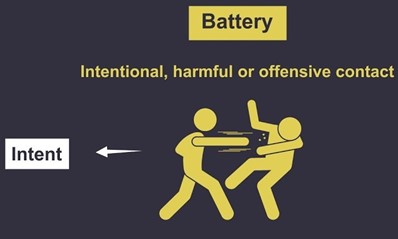Which of the following is an example of an Intentional Tort?
The primary nurse does not complete the plan of care for a client within 24 hours of the client’s admission.
The advanced practice nurse recommends that a client who is a danger to self and others be voluntarily admitted to the psychiatric unit.
The treatment team changes a client's admission status from involuntary to voluntary after medication alleviates the client's hallucinations.
The nurse decides to give a PRN dose of a neuroleptic drug to a client to prevent violent acting out because the unit is short staffed.
The Correct Answer is D
An intentional tort is a wrongful act committed by someone who intends to cause harm. In this case, the nurse’s decision to administer medication to the client without a valid medical reason and solely for the purpose of preventing violent behavior due to staffing issues could be considered an intentional tort. The nurse’s actions could be seen as an intentional attempt to harm the client by administering medication without proper justification.

Nursing Test Bank
Naxlex Comprehensive Predictor Exams
Related Questions
Correct Answer is ["1.5"]
Explanation
The nurse should administer 1.5 tablets of clozapine 200 mg to achieve a daily dose of 300 mg. Calculation: 300 mg ÷ 200 mg per tablet = 1.5 tablets
Correct Answer is D
Explanation
An intentional tort is a wrongful act committed by someone who intends to cause harm. In this case, the nurse’s decision to administer medication to the client without a valid medical reason and solely for the purpose of preventing violent behavior due to staffing issues could be considered an intentional tort. The nurse’s actions could be seen as an intentional attempt to harm the client by administering medication without proper justification.

Whether you are a student looking to ace your exams or a practicing nurse seeking to enhance your expertise , our nursing education contents will empower you with the confidence and competence to make a difference in the lives of patients and become a respected leader in the healthcare field.
Visit Naxlex, invest in your future and unlock endless possibilities with our unparalleled nursing education contents today
Report Wrong Answer on the Current Question
Do you disagree with the answer? If yes, what is your expected answer? Explain.
Kindly be descriptive with the issue you are facing.
